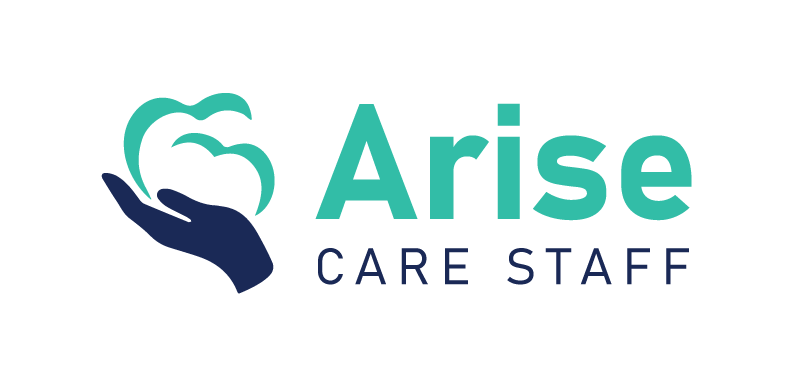Empowering Healthcare Professionals: The Value of Continuous Professional Development
In the dynamic world of healthcare, the demand for continuous professional development for healthcare workers cannot be overstated. As we navigate through an era of unprecedented medical advancements and ever-changing health emergencies, the significance of upholding professionalism in healthcare staffing and fostering compassionate healthcare professionals becomes increasingly paramount. Continuous professional development (CPD) stands as a fundamental pillar in not only enriching healthcare workers' skills but also in enhancing the overall quality of patient care. It ensures that healthcare professionals remain knowledgeable, competent, and prepared to tackle the myriad of challenges presented in their day-to-day duties.
In this article, we delve into the essence of continuous professional development, its undeniable benefits within the healthcare sector, and the most effective methods to engage in CPD. Furthermore, we will explore the essential role of healthcare institutions in supporting their staff's professional growth. By providing a comprehensive overview, our aim is to illuminate the path towards empowering healthcare professionals through structured and consistent development opportunities. This approach not only elevates the standards of care but also underscores the value of professionalism and compassion in every healthcare interaction.
Understanding Continuous Professional Development (CPD)
Definition of CPD
Continuous Professional Development (CPD) is a systematic process that involves the maintenance, improvement, and continuous acquisition or reinforcement of life-long knowledge, skills, and competencies for health professionals. It extends beyond traditional Continuing Medical Education (CME) by incorporating a broader range of competencies necessary for high-quality medical practice. These include medical, managerial, ethical, social, and personal skills, thus supporting the well-established tradition of lifelong learning in the medical profession.
Key Components of CPD
- Self-driven Learning: CPD is tailored according to individual needs assessments, allowing health professionals to focus on areas most pertinent to their current and future roles.
- Multidisciplinary Context: It considers the complex work environment of healthcare, emphasising the necessity for a multidisciplinary approach in patient care.
- Comprehensive Competencies: Beyond clinical updates, CPD includes research, scientific writing, ethical practice, communication, management, and behavioral skills, among others.
- Legal and Ethical Practice: CPD involves legal aspects such as avoiding lawsuits and adhering to compulsory relicensure, promoting accountability and ethical practice.
- Evaluation and Improvement: A significant component is the self-evaluation model which ensures that CPD activities lead to measurable improvements in medical practice and patient care outcomes.
By engaging in CPD, healthcare professionals ensure they remain competent, effective, and capable of delivering safe and high-quality healthcare.
The Benefits of Continuous Professional Development in Healthcare
Improved Skills and Knowledge
Continuous Professional Development (CPD) significantly enhances the skills and knowledge of healthcare professionals. By engaging in structured training and educational activities, healthcare workers are better equipped to meet the evolving demands of their roles. This not only ensures that their qualifications remain relevant but also facilitates the identification of knowledge gaps, allowing for more targeted learning experiences.
Enhanced Patient Care
The ultimate goal of any healthcare professional is to deliver the highest quality of patient care. CPD plays a crucial role in achieving this by ensuring that practitioners are up-to-date with the latest medical advancements and clinical practices. This continuous learning process leads to improved patient management strategies, including better chronic disease management and more effective prescribing, directly enhancing patient outcomes.
Career Advancement and Job Satisfaction
CPD contributes significantly to career progression and job satisfaction among healthcare professionals. By providing opportunities for personal and professional growth, CPD not only aids in career advancement but also increases job satisfaction and retention rates. Healthcare workers who participate in CPD activities are less likely to leave their current positions and more likely to feel fulfilled and confident in their professional roles.
Effective Ways to Engage in Continuous Professional Development
Formal Education and Workshops
- Professional Development Plans (PDP): These plans are crucial for ensuring that continuous professional development activities are relevant and beneficial. They help healthcare professionals identify knowledge gaps and connect learning to practice needs, enhancing skills in line with changes in their roles.
- Specialist High-Level Requirements: For specialists, engaging in education and performance review activities approved by medical boards ensures that their CPD meets the rigorous standards required in their specific fields.
Online Courses and Webinars
Healthcare professionals can leverage a variety of online resources to stay updated with the latest in medical practice and technology:
- On-Demand Webinars: These provide flexibility and easy access to training on critical digital health tools and systems like My Health Record and Electronic Prescriptions.
- Medcast Plus: Offers a comprehensive platform for accessing over 250 hours of premium digital courses, enhancing the convenience and quality of healthcare education.
Networking and Mentoring
Mentorship plays a pivotal role in the professional development of healthcare workers by providing guidance, emotional support, and access to broader professional networks:
- Mentorship Programs: These programs support not only the personal growth of healthcare professionals but also enhance their capabilities in adopting and implementing digital technologies.
- Engaging with Peers and Experienced Professionals: Through networking, healthcare professionals can share experiences, seek advice, and gain insights that are not readily available through formal education channels.
The Role of Healthcare Institutions in Supporting CPD
Providing Resources and Opportunities
Healthcare institutions are crucial in providing the necessary resources and opportunities for Continuous Professional Development (CPD). They offer a variety of CPD activities including formal courses, workshops, seminars, and conferences. Additionally, access to libraries, research facilities, and online learning platforms plays a significant role in supporting the professional growth of healthcare workers. By facilitating these resources, institutions ensure that healthcare professionals can stay updated with the latest medical knowledge and practices, enhancing their skills and competencies in a rapidly evolving field.
Promoting a Culture of Continuous Learning
Promoting a learning-based culture is essential for healthcare institutions aiming to deliver high-quality, safe, and effective patient care. This culture encourages staff to engage in continuous professional development actively. Institutions support this by providing a supportive environment where employees can share knowledge and experiences, participate in peer-to-peer learning, and access various learning resources. Organisational commitment to personal and professional development signals to staff that they are valued, which not only attracts but also retains top talent.
Compliance with Regulatory Standards
Healthcare institutions play a pivotal role in ensuring that their staff meet the CPD requirements set by regulatory bodies. This involves having systems in place to track, verify, and report CPD activities accurately. Compliance with these standards is critical not only for maintaining professional licenses but also for upholding the quality and safety of healthcare services provided. Institutions must manage these requirements systematically to maintain credibility and transparency, ensuring that CPD activities are both effective and relevant to the needs of healthcare professionals.
Conclusion
Throughout this exploration of continuous professional development (CPD) in healthcare, we have underscored the undeniable value it brings in enhancing the skillset of healthcare professionals, thereby elevating the standard of patient care. Through structured learning opportunities, healthcare workers are not only equipped to navigate the complexities of modern healthcare environments but are also empowered to drive advancements in medical practice. The support from healthcare institutions in fostering a culture of continuous learning further amplifies the impact of CPD, ensuring that the healthcare sector remains adaptable, knowledgeable, and proficient in addressing the evolving healthcare needs of society.
The journey towards professional excellence in healthcare is ongoing, with CPD serving as a crucial catalyst for personal growth, improved patient outcomes, and career advancement. By embracing the multitude of CPD activities available and fostering an environment that values lifelong learning, healthcare professionals can continually refine their competencies. Thus, the collective efforts in promoting CPD not only advance the healthcare profession but significantly contribute to the broader goal of delivering exceptional patient care, underpinning the critical role of education in the evolution and improvement of healthcare services worldwide.
Enjoyed this post?
Share it with your network!










